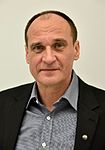2023 Polish parliamentary election
This article needs additional citations for verification. (October 2020) |
| |||||||||||||||||||||||||||||||||||||||||||||||||||||||||||||||||||||||||||||||||||||||||||||||||||||
All 460 seats to the Sejm 231 seats are needed for a majority in the Sejm All 100 seats to the Senate of Poland | |||||||||||||||||||||||||||||||||||||||||||||||||||||||||||||||||||||||||||||||||||||||||||||||||||||
|---|---|---|---|---|---|---|---|---|---|---|---|---|---|---|---|---|---|---|---|---|---|---|---|---|---|---|---|---|---|---|---|---|---|---|---|---|---|---|---|---|---|---|---|---|---|---|---|---|---|---|---|---|---|---|---|---|---|---|---|---|---|---|---|---|---|---|---|---|---|---|---|---|---|---|---|---|---|---|---|---|---|---|---|---|---|---|---|---|---|---|---|---|---|---|---|---|---|---|---|---|---|
| |||||||||||||||||||||||||||||||||||||||||||||||||||||||||||||||||||||||||||||||||||||||||||||||||||||
| |||||||||||||||||||||||||||||||||||||||||||||||||||||||||||||||||||||||||||||||||||||||||||||||||||||
Parliamentary elections will be held in Poland in autumn 2023 to elect members of the Sejm and Senate, although they can be held sooner if a snap election is called, which last occurred in 2007. The most recent election, in 2019, resulted in the re-election of a majority Law and Justice government, albeit without a majority in the Senate.
Electoral system[]
The process of election for the Sejm is through party-list proportional representation via the D'hondt method in multi-seat constituencies,[1] with a 5% threshold for single parties and 8% threshold for coalitions (with the requirements waived for national minorities).
The date of the election will be set by the President of Poland (consistent with constitutional requirements, whereby the election may be held 30 days before the fourth anniversary of the beginning the current convocation of Parliament, on a non-working day, including public holidays).
Should the opposition parties win government, they would require a three-fifths majority of MPs, to overturn a presidential veto.[2]
Political parties[]
The table below lists party groups currently represented in the Sejm.
Other parties seeking to take part:
| Name | Ideology | Leader(s) | ||
|---|---|---|---|---|
| AU | AGROunia[6] | Agrarianism | ||
Opinion polls[]

References[]
- ^ "Election Resources on the Internet: Elections to the Polish Sejm, Part I". electionresources.org. Retrieved 2014-08-03.
- ^ "Konwencja PO. Budka proponuje Koalicję 276. "Tyle głosów potrzebnych do przejęcia władzy"". gazetapl (in Polish). Retrieved 2021-07-06.
- ^ "Jarosław Gowin's leaves the United Right". fakty.tvn24.pl (in Polish). 11 August 2021.
- ^ "Polish voters give their verdict on four years of right-wing populists". Independent.co.uk. 12 October 2019.
- ^ "Poland election: Ruling Law and Justice party win poll". BBC News. 14 October 2019.
- ^ Ryszard Łuczyn (4 December 2021). "PSL i AgroUnia. Kto może wygrać z PiS na wsi?". Polityka.pl (in Polish). Retrieved 6 February 2022.
Notes[]
- ^ 1 MP elected on The Left list, former member of the Spring party and 3 MPs from KO.
- ^ Agreement used to be a part of the United Right with PiS until 11th of August 2021.[3]
- 2023 elections in Europe
- Elections in Poland
- 2023 in Poland
- Future elections in Poland









